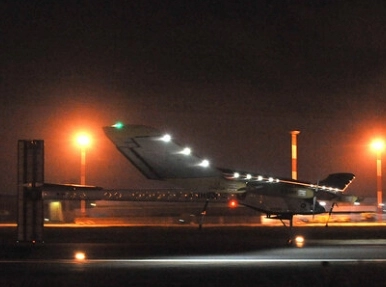 NEW DELHI: The government will re-examine standard operating procedures (SOPS) for handling medical emergencies at airports following the sudden death of a pilot due to cardiac arrest shortly after landing in Delhi last week, officials said on Wednesday.
NEW DELHI: The government will re-examine standard operating procedures (SOPS) for handling medical emergencies at airports following the sudden death of a pilot due to cardiac arrest shortly after landing in Delhi last week, officials said on Wednesday.
The ministry of civil aviation (MoCA) plans to evaluate existing health regulations for pilots and review airline-specific emergency protocols in response to the incident.
“There is a need to look at the protocols being followed at the airport while dealing with medical emergencies. We will be reviewing the SOPS followed during such medical situations,” a government official told HT, requesting anonymity.
The incident prompted authorities to take a deeper look into health checks and operational stress, particularly pilots’ turnaround times and emergency management in high-pressure aviation environments, according to another official.
Initial reports suggested poor handling of the situation when the 36-year-old Air India Express first officer collapsed minutes after landing on April 9. A group of pilots later alleged the co-pilot had been suffering from fatigue.
A civil aviation ministry official disputed these claims. “According to the incident report, the ambulance reached the pilot well on time, contrary to allegations. The pilot had only operated the Delhi-Srinagar-Delhi sector that day with total duty hours of just 11 hours 40 minutes in the previous seven days,” the official said.
“He was rushed to the nearest hospital by the airport medical team while still conscious and communicating. He collapsed after reaching the hospital and could not be revived,” the official added.
The official clarified that the pilot operated only as a co-pilot when on duty. “As per norms, he was last assessed by the Indian Air Force medical team in January this year and declared fit to fly. However, his flying licence did not permit him to operate without an experienced pilot,” a DGCA official explained.
Mark D Martin, former pilot and founder of Martin Consulting, called for a comprehensive review. “A detailed independent investigation should be initiated. This will shed light on operational realities such as pilot fatigue, the adverse impact of high-altitude operations, post-surgery crew flight response and behaviour, and the effectiveness of Air Force medical exams for line pilots,” he said.
“In the interest of morale, safety, and governance, there must be no finger-pointing between the airline, the regulator, and the pilot unions. The root cause findings should be incorporated into case studies and training,” Martin added.
He emphasised the need for SOPS “to ensure transparency and clarity surrounding such unfortunate and critical flight-phase crew deaths.”